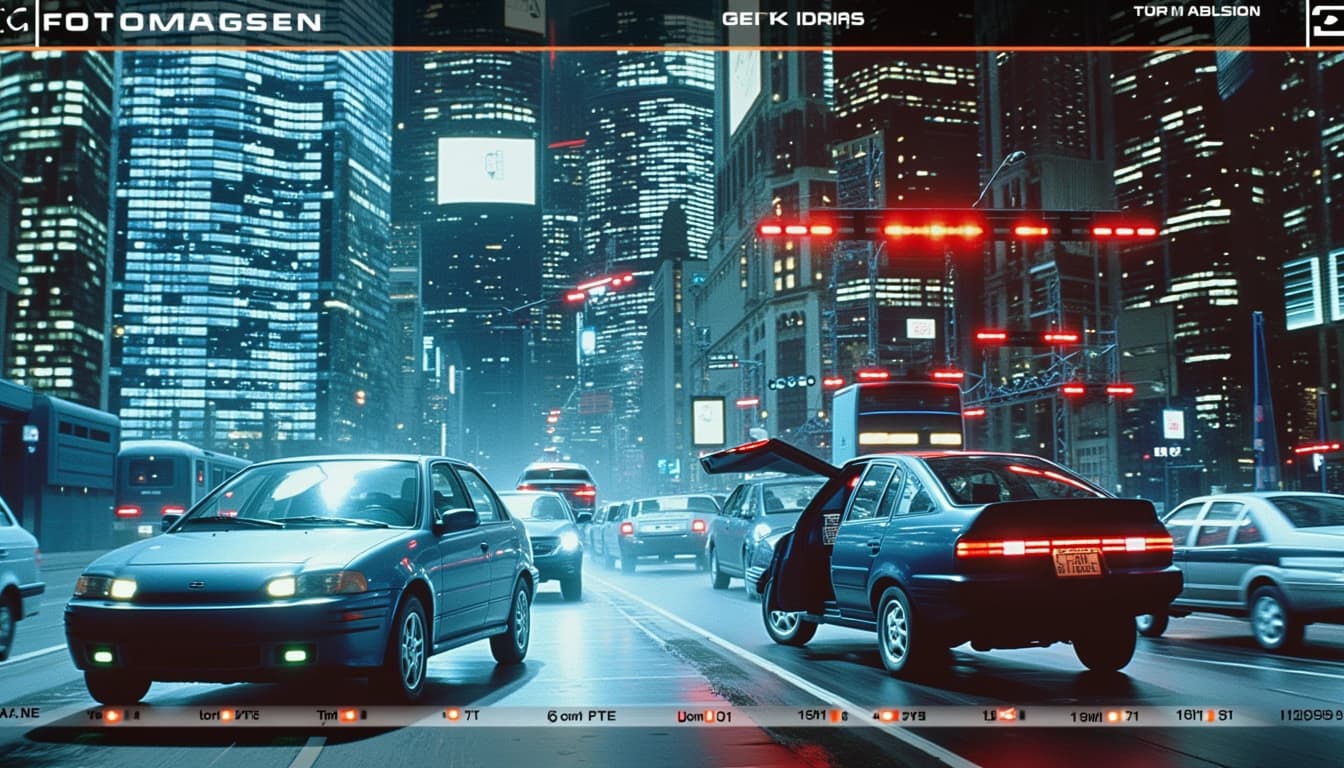
Stable Diffusion 3.5 Medium: A Comprehensive Overview
By John Doe 5 min
Key Points
Stable Diffusion 3.5 Medium, developed by Stability AI, is a text-to-image AI model released in October 2024, designed for consumer hardware with at least 12 GB VRAM.
It seems likely that this model offers improved image quality, typography, and complex prompt understanding, based on research suggesting enhancements in its Multimodal Diffusion Transformer (MMDiT-X) architecture.
The evidence leans toward it being efficient and accessible, with user feedback highlighting faster performance and lower VRAM needs compared to larger models, though there are some controversies around censorship and hand generation errors.
Overview
Stable Diffusion 3.5 Medium is part of Stability AI's latest suite of generative AI models, aimed at creating high-quality images from text prompts. Released in October 2024, it's built to run on standard consumer hardware, making it accessible for many users.
Key Features
This model uses a Multimodal Diffusion Transformer with improvements (MMDiT-X), featuring three pretrained text encoders and QK-normalization for training stability. It supports resolutions from 0.25 to 2 megapixels and is noted for better handling of complex prompts and typography.
Usage and Accessibility
You can access it on Hugging Face and use tools like ComfyUI for a node-based interface. It's recommended for users with at least 12 GB VRAM, and quantization can help reduce memory usage further.
Unexpected Detail: Community Feedback
An interesting aspect is the mixed user feedback, with some praising its speed (4x faster than the Large version) and others noting issues like censorship on certain content, which might affect creative freedom for some users.
Comprehensive Analysis of Stability AI's Stable Diffusion 3.5 Medium
This detailed examination explores the background, technical specifications, usage, and community reception of Stability AI's Stable Diffusion 3.5 Medium.
Stable Diffusion 3.5 Medium is a text-to-image generative AI model released in October 2024. The model is part of the broader Stable Diffusion 3.5 family, which includes Large and Large Turbo variants, and is designed to balance performance with resource efficiency, making it suitable for consumer hardware.
Introduction and Background
Stable Diffusion, initially launched in 2022 by Stability AI, has become a cornerstone in text-to-image generation, known for its open-source nature and permissive licensing under the Stability AI Community License. This license allows free use for research, non-commercial, and commercial purposes for organizations or individuals with less than $1M in annual revenue, as detailed on Hugging Face. The series has seen iterative improvements, with each version enhancing image quality, prompt adherence, and accessibility. Stable Diffusion 3.5 Medium, released on October 29, 2024, follows the earlier Stable Diffusion 3 Medium from June 2024, addressing community feedback to improve performance.
Model Overview and Key Features
Stable Diffusion 3.5 Medium is a Multimodal Diffusion Transformer with improvements (MMDiT-X), a sophisticated architecture that leverages three fixed, pretrained text encoders: OpenCLIP-ViT/G, CLIP-ViT/L, and T5-xxl. This setup, combined with QK-normalization for training stability and dual attention blocks in the first 12 transformer layers, enhances its ability to handle complex prompts and generate high-quality images. The model is noted for its improved image quality, better typography and prompt understanding, and resource efficiency.
Improved Image Quality
The model delivers enhanced detail, color, and lighting, making it suitable for photorealistic outputs and various artistic styles. These improvements are particularly noticeable in complex scenes where previous versions might have struggled with consistency.
Typography and Prompt Understanding
Stable Diffusion 3.5 Medium excels at rendering text within images and comprehending long, complex prompts involving spatial reasoning and compositional elements. This makes it a versatile tool for creative professionals who need precise control over their outputs.
Resource Efficiency
Optimized for consumer hardware, the model requires at least 12 GB VRAM, making it accessible to a wider audience without the need for high-end computing resources. This balance of performance and efficiency is a key selling point for the Medium variant.
Conclusion & Next Steps
Stable Diffusion 3.5 Medium represents a significant step forward in the evolution of text-to-image models, combining advanced features with practical accessibility. Future developments may focus on further reducing hardware requirements and expanding the model's capabilities in niche applications.

- Improved image quality with enhanced detail and lighting
- Better typography and prompt understanding
- Optimized for consumer hardware with 12 GB VRAM requirement
Stable Diffusion 3.5 Medium is the latest iteration in Stability AI's lineup of text-to-image diffusion models. It builds upon the success of previous versions, offering improved performance and efficiency. The model is designed to generate high-quality images from textual descriptions, catering to a wide range of creative and professional applications.
Model Architecture and Capabilities
Stable Diffusion 3.5 Medium utilizes a MMDiT-X architecture, which stands for Multimodal Diffusion Transformer with improvements. This architecture supports high-resolution image synthesis and offers better coherence across different resolutions. The model has been trained on a diverse dataset, including synthetic and filtered publicly available data, ensuring robust performance across various use cases.
Technical Specifications
The model features approximately 2.5 billion parameters, making it lighter than its larger counterparts while still delivering impressive results. It supports resolutions ranging from 0.25 to 2 megapixels, providing flexibility for different applications. The inclusion of multiple text encoders, such as OpenCLIP-ViT/G, CLIP-ViT/L, and T5-xxl, enhances its ability to interpret and generate images from complex textual prompts.
Performance and Hardware Requirements
Stable Diffusion 3.5 Medium is optimized for performance on consumer-grade hardware, requiring a minimum of 12 GB VRAM. This makes it accessible to a broader audience, including hobbyists and professionals alike. The model's training stability is ensured through techniques like QK-normalization and dual attention blocks in the first 12 transformer layers.

Licensing and Availability
The model is available under the Stability AI Community License, which allows free use for projects with annual revenues under $1 million. This licensing model encourages widespread adoption while supporting commercial applications. Users can access the model through Stability AI's platform or integrate it into their own workflows via API.
Conclusion and Future Developments
Stable Diffusion 3.5 Medium represents a significant step forward in text-to-image generation, balancing performance and accessibility. Its advanced architecture and efficient design make it a versatile tool for creators and developers. Future updates are expected to further enhance its capabilities, including support for even higher resolutions and more complex prompts.

- Improved resolution support up to 2 megapixels
- Optimized for consumer-grade hardware
- Multiple text encoders for better prompt interpretation
- Free for projects under $1M annual revenue
Stable Diffusion 3.5 Medium is the latest text-to-image model from Stability AI, released on June 12, 2024. It builds upon the capabilities of Stable Diffusion 3.0, offering improved performance and efficiency. The model is designed to generate high-quality images from textual prompts, catering to a wide range of creative and professional applications.
Model Specifications and Performance
The model features a 2 billion parameter architecture, utilizing a DiT backbone for enhanced image generation. It supports a resolution of 1024x1024 pixels, making it suitable for detailed and high-resolution outputs. Performance benchmarks indicate significant improvements over previous versions, with faster inference times and better adherence to prompts.
VRAM Requirements and Optimization
Stable Diffusion 3.5 Medium requires 9.9-11.1 GB of VRAM for optimal performance. However, it can run on 8 GB VRAM with optimizations such as using T5 in 4bit/FP8. These optimizations make the model more accessible to users with varying hardware capabilities.
Image Quality and Styles
The model excels in generating high-quality images with accurate anatomy and diverse artistic styles. It supports 2 MP images and performs exceptionally well in pixel art and specific artist styles like Alphonse Mucha and Frank Frazetta. User tests reported minimal errors, with only 1 borked image out of 200 generated.

Prompt Adherence and Limitations
The model shows improved prompt adherence compared to SDXL 1.0, with features like Skip Layer Guidance preventing common issues like hand collapse. However, it has limitations, including censorship on nudity and occasional grainy results. Compatibility issues may arise due to additional attention layers.
Potential Applications and Use Cases
Stable Diffusion 3.5 Medium is versatile, suitable for art and design, education, research, and content creation. It can generate high-quality artworks, designs, and illustrations, making it a valuable tool for professionals and hobbyists alike. The model's ability to produce diverse outputs without extensive prompting enhances its usability across various domains.

Conclusion & Next Steps
Stable Diffusion 3.5 Medium represents a significant step forward in text-to-image generation, offering improved performance, quality, and versatility. While it has some limitations, its potential for creative and professional applications is substantial. Future updates may address current issues, further enhancing its capabilities.
- Improved performance and efficiency over previous versions
- Supports high-resolution image generation
- Versatile applications in art, design, and content creation
Stable Diffusion 3.5 Medium is the latest iteration in Stability AI's text-to-image generation models, designed to offer enhanced performance and accessibility. It builds upon the success of previous versions, incorporating advanced architectural improvements and optimization techniques to deliver high-quality image synthesis.
Key Features and Architecture
The model introduces the MMDiT-X architecture, which combines elements of Diffusion Transformers (DiT) and Multi-Modal DiT to improve image quality and prompt adherence. It utilizes a rectified flow approach, ensuring smoother transitions during the image generation process. This architecture is optimized for efficiency, making it suitable for consumer-grade hardware while maintaining high performance.
Performance and Efficiency
Stable Diffusion 3.5 Medium is designed to run efficiently on GPUs with as little as 6GB of VRAM, making it accessible to a broader audience. Despite its reduced size compared to larger models, it retains impressive capabilities in generating detailed and coherent images from text prompts. Benchmarks indicate significant improvements in speed and resource utilization without compromising output quality.
User Experience and Applications

Users have reported positive experiences with the model, highlighting its speed and versatility in generating diverse visual content. It supports a wide range of creative applications, from digital art and design to research and prototyping. The model's ability to handle complex prompts and produce high-resolution outputs makes it a valuable tool for both professionals and hobbyists.
Safety and Ethical Considerations
Stability AI has implemented safety mitigations to address potential misuse of the technology. These include content filters and guidelines to prevent harmful or inappropriate outputs. Developers are encouraged to test the model thoroughly and adhere to the Acceptable Use Policy to ensure responsible deployment.
Conclusion and Future Directions
Stable Diffusion 3.5 Medium represents a significant step forward in text-to-image generation, balancing performance, accessibility, and ethical considerations. Its innovative architecture and efficient design make it a standout choice for creative and research applications. Future updates are expected to further refine its capabilities and address user feedback.

- Enhanced prompt understanding and image quality
- Improved efficiency for consumer hardware
- Robust safety and ethical guidelines